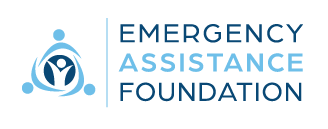What to Know about your Immediate Response Program (IRP)
July 26, 2018
States Increasingly Say That All Revenue Sources Constitute a Solicitation
December 12, 2018November 19, 2018
Establishing and administering an effective Disaster and Hardship Relief Fund requires substantial administrative skills. Many of the regulatory rules and administration best practices can be confusing. However, all administrative practices and processes must be designed to meet the basic regulatory requirements of these funds. Below is a brief overview and simplification of many of these regulatory requirements.
- The program is operated by a public charity rather than by any sponsoring organization-related private foundation.
- The relief fund is not excessively controlled by the sponsoring organization.
- The relief fund is not funded by the sponsoring organization in a manner which will cause it to be classified as a private foundation.
- The relief fund does not fulfill a legal obligation of the sponsoring organization, such as a program that is part of a collective bargaining agreement or a program that is part of a written plan that provides life, sick, accident, supplemental unemployment compensation or similar benefits.
- The relief fund’s program is intended to provide basic necessities to persons who have encountered financial hardship for reasons beyond their control and/or to provide temporary relief to meet the necessities of life of persons who are needy and distressed on account of a disaster.
- The relief fund’s beneficiaries comprise a charitable class which is open-ended, of sufficient size and which is not organized or operated to benefit particular individuals.
- Other than as an initial qualifier, employment is not a relevant factor in the application or selection process. For example, team member’s position in the corporation, length of service, continued employment, etc.
- The relief fund establishes a committee to administer the program consisting of persons who understand that they are acting in a personal capacity as agents of the relief fund rather than as representatives of the sponsoring organization.
- The relief fund establishes specific written criteria for the application, selection and disbursement of funds. The selection process must be objective and nondiscriminatory.
- The program is not used by the sponsoring organization to recruit team members or to induce team members to continue their employment or otherwise to follow a course of action sought by the sponsoring organization.
- The relief fund informs all charitable class members that disaster relief and emergency hardship funds are available, including the criteria for application and selection.
- The relief fund will accept voluntary contributions from team members or others, but it will not accept contributions earmarked for specific individuals.
- While not unique to relief funds, additional laws and regulations require that Personally Identifiable Information and data privacy rules must be adhered to.





